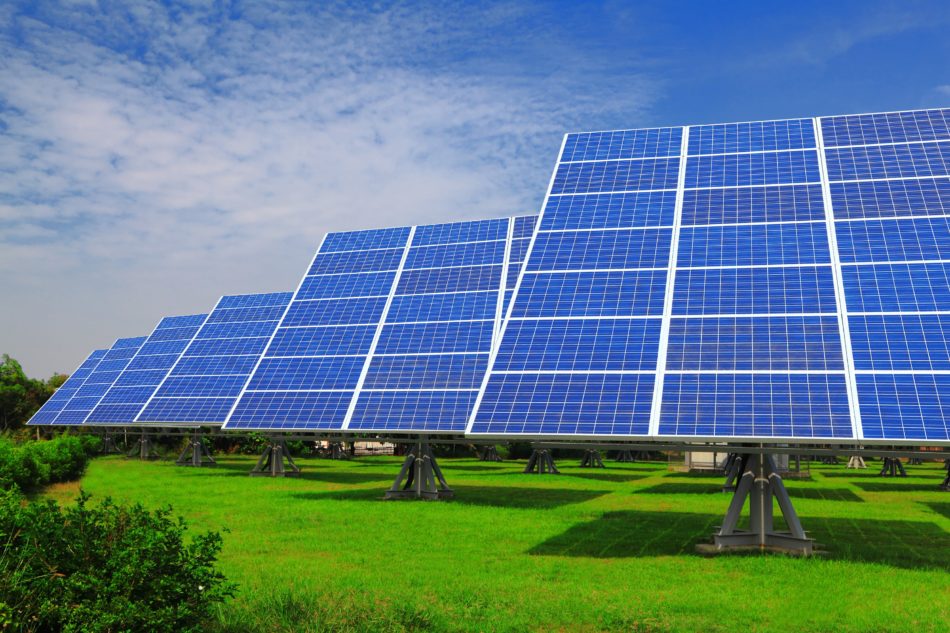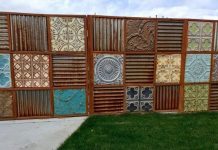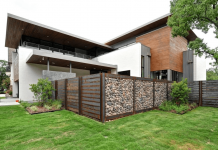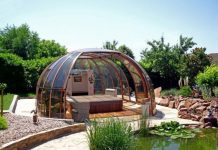The industrial revolution has been the harbinger of many things—progress in technology, new forms of construction material, the concept of suburbia, industrialization; and as a consequence, pollution. For two hundred years now, the environment, the atmosphere has been steadily polluted, and as a result, we are facing the biggest enemy yet; global warming.
So to reduce the impact of pollution and to maintain our style of living—or enhance it—scientists have discovered many new, ‘renewable’ sources of power—solar, biomass, geothermal, wind and hydro.
Now, these may be considered ‘clean’—as in they have no negative impact on the environment—but as we all know, when something seems too good to be true, that’s because it probably is. Similarly all of the above mentioned sources have their very own disadvantages that may have long term impact on our environment—and not of the positive variety.
Solar energy is one of the most mainstream go to’s when it comes to representing clean energy, as it is the most readily available source of natural, renewable energy all over the planet – the sun is everlasting, and so is solar power. In this article, we would be taking a look at solar energy – its advantages, and disadvantages, along with several types of solar panels available in the market at this moment.

READ ALSO: How Do Solar Panel Work
SOLAR ENERGY
The energy derived from the sun to power our daily lives is known as solar energy. It is renewable and is said to produce little to no emissions. It has now become a norm to use solar panels to power all genre of projects – ranging from relatively small residential to large scale urban projects. Many new prototypes to generate solar energy on a commercial scale are underway e.g., catching the sun’s rays through satellite and distributing it on massive scale via solar plants, etc. This metamorphosis of the sun’s energy into electricity takes place through photovoltaic technology, in which small cells convert the essence of solar power into conduct-able, useable electricity. It has now become a trend, a movement, a belief – even a relief. People incorporate solar panels in their home designs to generate electricity that would have been footed towards the government bill. This trend might even become a phenomena, one of these centuries.
As mentioned above, all technological advancement comes with a bit of a hard edge, and like everything else, solar energy comes with its own sets of pros and cons. Further, we would be discussing some advantages, and disadvantages of solar energy, so that one might make a well-informed decision while deciding to underwrite this technology.
Advantages
Following are the major advantages of solar power:
- As an alternative energy production method it is well-known, and commended. Solar energy is not only sustainable, but is easy enough to integrate in any sort of building construction. It helps reduce the electricity bills, and expenditure.
- Because of the fact that the photovoltaic technology is almost microscopic, the solar panels need very little maintenance after being installed.
- Producing solar energy does not allow for any major blowbacks – it does not deplete its source of energy; the sun, which makes it perpetually reliable.
- Solar Energy causes no pollution at all, which definitely works in its favor.
- It has no specific white noise pollution. It is a simple technology, with a simpler operating system that produces no noise while it produces electricity.
- The most beneficial advantage of solar panels is that they use sun, which makes it a renewable, energy-efficient system. Any renewable source of energy as pure as the sun should be declared ‘green’ and in a world where industrialization has caused major environmental damage, having a green energy source is as reassuring as it is brilliant.
- Solar energy is technically an infinite source of energy. Statistics estimate that it would take 30 cum 40 years for the world’s fossil fuel reserves to deplete out. Compared to that, solar energy could be used as long as the run is revolving around the earth.
- Solar energy is not only used to power big building blocks such as architecture, but could also be incorporated in small, everyday objects like calculators, street lamps, and other low power consuming objects of everyday life.
Some would say that solar energy is a firm leap in the technological department, but given the bounds it is making, it would be correct to assume that in a few years, all the major disadvantages of this aspect of green energy would become obsolete.
Disadvantages
Following are the major disadvantages of solar power
- As far as large scale energy production is concerned, the main disadvantage is that solar panels and other paraphernalia use a significant amount of land. As the urban population is increasing day by day, this has turned out to be unsustainable practice.
- Although, this technology is ever improving, it is only about 20% efficient.
- Solar Panels are expensive to install. In a residential setting the user would definitely need more than one panel, and the cost of such installations will definitely be expensive. However, aside from the initial installation cost it would definitely pay back by increasing the independent electrical efficiency of a home, and decreasing the payable bills.
- Another major drawback is that it is only capable of producing power during day time, i.e., when the sun is out. So for almost half a day—give or take—solar panels are not delivering energy for a home.
- The effectiveness of the photovoltaic cells—the major component of solar panels—is determined by the level of air pollution in your area. So the effectiveness of this energy source in densely populated cities as well as industrial areas, leaves something to be desired.
- To use as a private source of energy even during the night, the energy is stored in batteries attached to the PV system. They are heavy and difficult to store and easily shorted out. They have to be replaced on occasion so the system is still not on par to be completely, independently and inherently sustainable.
Knowing the pros and cons means getting to know every aspect of the item you would be investing in. Now that you know all the pros and cons of owning solar panels a la integration system, its qualities, and the kind of energy efficiency it is proficient at, you will be able to make a better informed decision.
READ ALSO: Solar Panel Buying Guide
Types of Solar Panels
Knowing your choices, along with what would be the best possible option before making any purchase is an important factor. Like every object, solar panels come in a range of wide variety, and each one dictates what kind of project it would run most efficiently in. Further down, you would learn all there is to know about the various kinds of solar panels available in the market and which one would be the best for you. It would be knowledgeable to know that more than ninety percent of the solar panels manufactured around the world are made out of silicon – it is a key material in most of the types described below.
1. Crystalline Silicone Solar Cells
A purely simple silicone structured solar panel that is usually mass produced, and available in concentration to the general public. The difference is not mainly in the structure, but also in the purity of the silicon. The purity of the silicon depends on the alignment of the silicon molecules – the better aligned they are, the more efficient the solar panel becomes, as it gets easier for the molecules to conduct all that solar power, and convert it into useable energy. The crystalline silicone solar cell deviates into two branches: Monocrystalline, and Polycrystalline.
a. Monocrystalline Silicon Solar Cells
These solar cells are made up of monocrystalline silicon – which means that they contain a single crystal of silicon. They’re usually very easily recognizable, in that they boast a smooth, even coloring, and a uniformity in the overall outlook, indicating that they’re made up of a highly pure kind of silicon. These specific cells are made up of silicon ingots, which resemble a cylinder in shape – and to optimize a single cylindrical cell, it is further cut into a silicon wafer to further enhance the quality, and cost efficiency of its molecular structure. The wafer like cut is what essentially gives the Monocrystalline Silicon Solar Cells their characteristic look.
Some advantages of these solar cells are:
- Its pure bred silicon incorporation makes it highly efficient.
- These are the panels that would work best in space constraints.
- They come with the longest warranty – twenty-five years.
- These solar cells have the capacity to perform better in low-light conditions, which make them ideal.
A few disadvantages, as follows:
- Easily breakable – even when a small part of the panel is laid over by dirt or snow, the circuits in the battery would break.
- As they are made from pure-bred silicon, these are the most expensive kind of solar cells available.
- When the silicon cylinder is cut on the sides to make a silicon wafer, one of the sides is always laid to waste.
b. Polycrystalline Silicone Solar Cells
The Polycrystalline Silicone Solar Cell were introduced relatively late in the market – the tail end of the twentieth century, and are a more modified version of their monocrystalline counterpart. The polycrystalline solar cells differ in formation and structure. Their raw form is not a cylindrical silicon piece like the monocrystalline solar panels; but is in fact a molten form of raw silicon. The molten silicon is cooled off to form the perfect ‘wafer’ formation to attain the solar panel outlook. It is a simpler process than that of the monocrystalline formation, and with this ease comes a basic advantage of cost efficiency. These solar cells are now readily available in the market.
READ ALSO: What Is Solar Water Heater
Following are some advantages of these type of solar cells:
- These work at a higher, more efficient capacity in warm weather, and can bring out the best results when it is relatively cooler.
- Since the process of making the polycrystalline silicone solar cell is easier, it is more cost efficient, and would be well within the budget of most people.
- The amount of silicon wasted is decidedly lesser.
A few disadvantages
- It would be notable to know that the polycrystalline solar cell works slightly worse in high temperature, but the discrepancy is low enough to not be noticed by the user.
- Since the silicon is not pure enough, expect the efficiency of these panels to be less than the monocrystalline panels.
- These do not adhere to space constraints, as a larger amount would be needed to achieve the same efficiency as the monocystalline solar panel.
- They might not be as aesthetically pleasing, because of their conspicuous
2. Thin Film Solar Cells
As the name suggests, the thin film photovoltaic cell is comprised of several thin films of photovoltaic material attached to a substrate material. They are relatively easier to make, and should be more aesthetically appealing than their older counterparts. According to the kinds of photovoltaic material that is deposited on the face, the thin film solar cell is farther characterized into sub genres. The efficiency of these solar cells depend on the purity of silicon used. It could range from 7 to 13 %, depending on the sterility of the silicon. Their aesthetic appeal and cost efficiency had rendered them the most usable panels between the years of 2007-12.
Some advantages of thin film solar panels are:
- These are relatively cheaper to manufacture, as the process to make the photovoltaic film deposit is relatively simple.
- Their aesthetic quality is unpatrolled, and combined with cost efficiency, makes them a much more desirable product.
- These are not affected by high temperatures, and/or shading.
- Their flexibility offers a potential to use more advanced applications.
Following are some disadvantages of the thin film solar cells:
- Since their efficiency rate is lower than the polycrystalline and monocrystalline solar cells, they can only be used in a space where constraints do not limit the size-ability of their number.
- Since they can only be used in large numbers, it makes the cost efficiency of a single product pretty obsolete.
- These cannot be used for residential projects due to low efficiency and space constraints.
These were the two major categories of types of solar panels. These would help you better determine the kind that would be more suitable for your specific project.
Further down, we would be looking at the top 7 contenders in the solar panel industry for the year 2016.
TOP 7 CONTENDERS
Based on the efficiency of the product, the purity of its materials, and the sizeable lifespan of its parts, we have made a list of the top seven contenders in the solar energy genre. These products are the best of the best, and if you’re looking to buy a solar panel, then it would be good to select one based on the ratings of this list.
- Kyocera KD245GX-LFB 245
- Canadian Solar CS6X-305M
- Grape Solar 390W
- Grape Solar 250W
- Suntech STP255S-20/Wdb
- Samsung LPC250SM
- Sharp ND-Q245F
Kyocera KD245GX-LFB 245
Made from polycrystalline photovoltaic cells, this solar panel unit is one of the very top contenders to make it on this list.. The very best of its kind, the Kyocera Solar Panel is simple and straightforward in design, and sturdy in structure. Comprised of high transparency tempered glass with an low iron finish in the face, its frame is made of black iodized aluminum which is specifically designed to withstand harsh conditions – come literal hail, or high water, this stand won’t fall to it. In addition to all the requisite tidbits that would make it work efficiently, this solar panel module comes with a two year workmanship warranty and a twenty year manufacturer’s warranty.
Advantages:
Let us have a look at the advantages of this specific system:
- According to a field comparison done by a well reputed research group, the Kyocera brand is more resilient and trustworthy than most other solar panel manufacturers available in the market.
- The Kyocera KD245GX-LFB 245 module consists of 60 solar cells in its panels face.
- The vertical integration of this module provides unsurpassed quality control.
- It is by far, one of the most efficient solar power conversion modules available in the market – conducting a respectable 16 percent of the input sunrays into useable electricity.
- The Kyocera solar panel is resilient, and able to withstand harsh conditions, low temperatures and unpredictable climate highs.
- It can withstand a hail storm impact of 1 inch at 51 mph.
- It is self-cleaning.
Disadvantages:
A few disadvantages:
- The dimensions make this panel out to be an almost five by five module, so you would need a specifically designed place on your roof, this could look a bit garish on your home style.
- It is quite heavy, and would be difficult to take atop singlehandedly.
Canadian Solar CS6X-305M
Derived of monocrystalline technology, the Canadian solar panel is definitely efficient, with its visually appealing form, a sturdy output of energy conversion, and an appealing warranty. It comes from a relatively young manufacturing company – established in 2001 – but even its younger conception has not had an impact on its glorious efficiency. Comprised of 72 solar cells, this module could be used even in single formation for on grid applications. The design is intricate and meticulous, resulting in pure efficiency that results in a high yield, and long term performance rate for each individual unit. The Canadian Solar modules are rigorously tested, resulting in high quality and amazing standards. This product comes with a ten year product warranty on materials and workmanship, combined with a twenty-five year linear power output warranty. It is robust, and durable.
Advantages
Let us have a look at a few advantages of this product:
- These panels are self-cleaning and require the bare minimum when it comes to maintenance. If the roof is inclined, then the rain would wash off most of the superficial dirt. You could also use water and soft sponge to clean the panels.
- The solar efficiency of the Canadian solar panels might not be unparalleled, but is certainly on par with the very best of the bunch. With a rate of 15.9% conversion of maximum output given a single module surface area, the results are pretty impressive.
- The aesthetics of the Canadian Solar Panel are quite peculiar; tall in length, and narrow in breath – rectangular. This aesthetic is not at all off putting, and could be used to achieve a modern contemporary outlook on your home architecture style.
- These panels come with the best warranty – ten years covering its product, and workmanship. They also seem to be more durable in the sense that they can take a high load without starting to malfunction.
- The Canadian Solar panel is resilient when it comes to taking on disreputable temperatures – from as low as 40 degrees, to as high as up to 185 degrees.
- The tempered glass face and aluminum frame make for a sturdy workmanship.
- An anti-reflective surface boosts the input of sunlight and assures maximum productivity, when it comes to enhancing efficiency.
- The Canadian Solar panel boasts positive power tolerance, outstanding performance at low radiance, and a high energy yield at a low NOCT.
Disadvantages
Let us have a look at a few disadvantages:
- It weighs almost 50 lbs., and would be difficult to take, and affix on the roof single handedly.
- Their unique outlook might not suit some user’s aesthetic sensibilities.
- If in need, there are comparatively fewer options to contact the company.
Grape Solar 390W
Grape Solar is clean energy production company which are experts in producing a wide range of adequately useable solar panels. Their products are quite good, if not the very best in the industry. Based on the monocrystalline technology, the Grape Solar 390W is effective, and uses high efficiency solar cells that are made from quality silicon – which makes it a good conductor, and converter of solar power into electricity. Grape Solar’s output is steady and reliable, and the product is relatively maintenance free.
Advantages
Let’s take a look at the advantages of this product:
- Most solar panels come with a budget that is far from cost effective in the initial installation process, but the Grape Solar 390W is definitely easy on the budget.
- It also boasts of a high transmittance rate, durability achieved by a low iron tempered glass, and enhanced impact resistance.
- It boasts a high efficiency output of 15.21%.
- They require a small amount of maintenance and could be easily cleaned off with water.
- These panels can handle a varying degrees of extreme temperatures – from 40 degrees to below 194 degrees.
- It is easily available in all reliable outlets.
- It boasts a tremendous electrical performance.
- It can work even in shadowy and low light environments.
- It has a unique frame which makes for an easy installation.
- The quality control is best to meet all the international standards.
- It offers a twenty five year power output warranty, and a ten year workmanship warranty.
Disadvantages
A few disadvantages as follow:
- Grape Solar has a relatively young conception (2009), so there might be a few who would prefer a better known brand.
- Most parts are primarily made in China, and assembled in the US.
Grape Solar 250W
Another product of the Grape Solar company, this one is smaller in wattage. If you’re looking for a small counterpart to decorate your roof while producing maximum output in the form of clean electricity, then this would be the product for you. Made from the monocrystalline technology, it boasts a high conduction, as well as conversion rate. It could be easily bought through retail, as well as online sources such as Amazon.
Advantages
Let’s take a look at a few advantages of this product:
- It provides a good efficiency rate at a relatively affordable price. The Grape Solar 250W is smaller in size, and therefore would be best suited for smaller projects – residential.
- The panels boast a conversion rate of 15.1%, which is not at all bad in the solar energy industry.
- The warranty is great – a ten year on the material and workmanship, along with a twenty five years on the output warranty.
- All modules are covered with a tempered glass cover, which adds a layer of protection against the weather.
- The required maintenance is pretty low, and the panels could be easily washed by water.
Disadvantages
Following are a few disadvantages:
- Since it is small, using this kind of panels for large scale projects would not be a feasible option.
- The company, by virtue of being relatively young, might not be fully trusted by the consumers.
Suntech STP255S-20/Wdb
A 225W module made from monocrystalline technology, the Suntech Solar module is a product of Sun Electronics. One of the leading names in the industry, it gives you good durability, an outstanding warranty package and requires little to no maintenance at all.
Advantages
Following are the advantages of this product:
- It is cost effective, and is easily within the appropriate budget.
- This product is efficient, and effective, with a high conversion rate, high tolerance features, and a passive outlook that would look best on any and all contemporary buildings.
- The frame is made up of iodized aluminum alloy, which makes it resilient and sturdy.
- This module boasts a high conversion efficiency of 15.4% - a respectable figure in the industry.
- It can bear a climatic variation – from high to low – and is regularly tested for snow and wind load tests.
- It also boasts a high tolerance of 5%, which makes it more efficient.
- Since it is made from monocrystalline silicone, it has a high conduction and conversion rate.
- It comes with a ten year warranty on workmanship.
- The Suntech module is regularly processed through rigorous quality control.
- It is compact and durable.
- It requires little to no maintenance and could be cleaned with water.
- It has a worldwide reputation in the solar market.
Disadvantages
- The company is hard to get in touch with if you have any questions.
Samsung LPC250SM
Samsung, on the whole is a pretty famous institution – with a franchise as big, and offering varying degrees of home, and leisure products, it is no surprise that the company is now making leaps and bounds in the solar industry as well. The Samsung manufactured solar panel is not only sturdy, but also pretty efficient. Samsung has been pretty active in the semiconductor industry, so it is only right that they be contenders to take note of in the solar industry as well. Made from monocrystalline silicon, these panels are good conductors, and offer an added element of durability.
Advantages
A few advantages, as follows:
This product qualifies for a 30% tax discount.
- It offers a 25 year solar output guarantee.
- The frame is made from an anodized aluminum alloy, which makes it sturdy and resilient.
- It is excellent in quality, and features strict quality control.
- The technology offers a high power output and low degradation issues.
- It has a 15.62% efficiency in the output rate.
- In addition to that, it requires little to no maintenance at all, and could be rinsed with water once in a while, if it gets too dirty.
- It could bear a high impact, and is therefore durable, and sturdy.
- It can also withstand temperatures of both too high, and too low climates.
Disadvantages
- The Samsung warranty is 5 years long, which is not the shortest, but also not the longest.
Sharp ND-Q245F
A pioneer in photovoltaic technology, it is only right that Sharp produces one of the best products available in the industry. Their solar-powered systems are applicable to wide range of applications, and Sharp ND-Q245F has made it in our top seven contenders. This company has been in the solar market for more than fifty years, and has a well-respected reputation that precedes all of its products. Not only are the Sharp solar panels durable, but they are literally a brand name at a cost efficient budget. Made up of polycrystalline silicone, they are a leading trend in the industry, and market.
Advantages
Let’s have a look at some of the major advantages of this product:
- These panels are resilient, and durable.
- They undergo a good quality control program.
- They are manufactured by a reputable company.
- They give off a respectable efficiency rate of 15%.
- These run well in high and low temperatures – as high as 40 degrees, and as low as below zero.
- These can remain resilient under impact – hail storms, snow load, wind load, etc.
- They require low maintenance, and could be rinsed off by only water or soft cloth and/or sponge.
- These come with a ten year workmanship warranty.
Disadvantages
- These modules are relatively less efficient than the rest of the Sharp production systems.











